Category Archives: Content
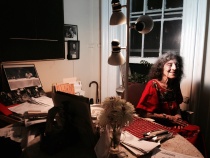
Communing with Dore Ashton
By Michael Corris
A tribute to Dore Ashton, “one of the most energetic, widely published, and politicized American writers on art, and one of the chief proponents of the artists of the New York School (she decried the label Abstract Expressionism).” Michael Corris shares his remembrances of Dore Ashton as well as the audio and transcribed text from their 2011 conversation about Ashton’s experiences with the New York art world in the 19650s and 1960s. Alfredo Jaar’s film, Dore Ashton, you know (2015), and photographs by Madeline Djerejian and Polly Bradford-Corris are also presented here.

Communing with Dore Ashton
By Michael Corris
A tribute to Dore Ashton, “one of the most energetic, widely published, and politicized American writers on art, and one of the chief proponents of the artists of the New York School (she decried the label Abstract Expressionism).” Michael Corris shares his remembrances of Dore Ashton as well as the audio and transcribed text from their 2011 conversation about Ashton’s experiences with the New York art world in the 19650s and 1960s. Alfredo Jaar’s film, Dore Ashton, you know (2015), and photographs by Madeline Djerejian and Polly Bradford-Corris are also presented here.

Temporary Collectives
An update from Temporary Collectives, a dynamic intercollegiate graduate project involving professors and students from six universities in North Texas.

Temporary Collectives
An update from Temporary Collectives, a dynamic intercollegiate graduate project involving professors and students from six universities in North Texas.
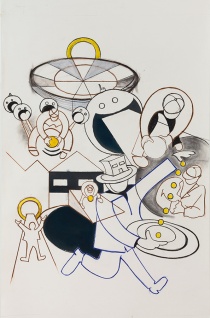
Playing by the Rules: Ericka Beckman in Conversation with Mary L. Coyne
By Mary L. Coyne
For the first conversation in Mary L. Coyne’s Playing by the Rules series, Coyne speaks with filmmaker Ericka Beckman about the framework of games and performance in Beckman’s films You The Better and Cinderella.

Playing by the Rules: Ericka Beckman in Conversation with Mary L. Coyne
By Mary L. Coyne
For the first conversation in Mary L. Coyne’s Playing by the Rules series, Coyne speaks with filmmaker Ericka Beckman about the framework of games and performance in Beckman’s films You The Better and Cinderella.

Playing by the Rules (Parts I–III)
By Mary L. Coyne
An introduction to Playing by the Rules, a new conversation series by curator and writer Mary L. Coyne.

Playing by the Rules (Parts I–III)
By Mary L. Coyne
An introduction to Playing by the Rules, a new conversation series by curator and writer Mary L. Coyne.
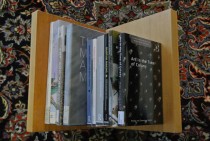
Bookshelf: Alexandra Nitschke
By Alexandra Nitschke
Alexandra Nitschke shares what she’s reading with Art Journal Open.

Bookshelf: Alexandra Nitschke
By Alexandra Nitschke
Alexandra Nitschke shares what she’s reading with Art Journal Open.
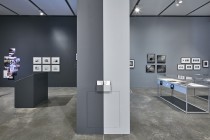
To Record, to Interpret, to Comment
By Anna Craycroft
In “To Record, to Interpret, to Comment,” Brookyn–based artist Anna Craycroft asks readers to reconsider how we come to know what we think we know about the history of modernist photography and the photographer Berenice Abbott, which draws from Craycroft’s extensive research into Abbott’s writings, photographs, letters, inventions, and other archival materials.

To Record, to Interpret, to Comment
By Anna Craycroft
In “To Record, to Interpret, to Comment,” Brookyn–based artist Anna Craycroft asks readers to reconsider how we come to know what we think we know about the history of modernist photography and the photographer Berenice Abbott, which draws from Craycroft’s extensive research into Abbott’s writings, photographs, letters, inventions, and other archival materials.
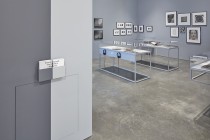
Art Journal Open Presents “To Record, to Interpret, to Comment” by Anna Craycroft
By Gloria Sutton
Art Journal Open presents “To Record, to Interpret, to Comment” by Anna Craycroft.

Art Journal Open Presents “To Record, to Interpret, to Comment” by Anna Craycroft
By Gloria Sutton
Art Journal Open presents “To Record, to Interpret, to Comment” by Anna Craycroft.
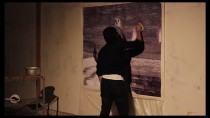
Edges of Action
By Nick Herman
In Edges of Action (2016), Los Angeles–based artist Nick Herman finds a distinctive method of framing his practice, blending the studied delivery of a public artist’s talk with the conversational pace of an intimate studio visit. This is the first installment of a unique three-part artist’s project Herman has created for Art Journal Open.

Edges of Action
By Nick Herman
In Edges of Action (2016), Los Angeles–based artist Nick Herman finds a distinctive method of framing his practice, blending the studied delivery of a public artist’s talk with the conversational pace of an intimate studio visit. This is the first installment of a unique three-part artist’s project Herman has created for Art Journal Open.
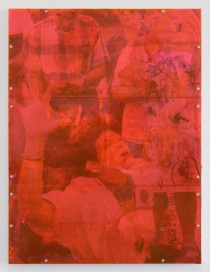
Art Journal Open Presents Edges of Action by Nick Herman
By Gloria Sutton
Art Journal Open is pleased to present Edges of Action by artist Nick Herman.

Art Journal Open Presents Edges of Action by Nick Herman
By Gloria Sutton
Art Journal Open is pleased to present Edges of Action by artist Nick Herman.
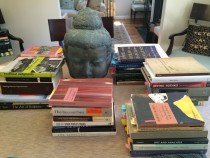
Bookshelf: Lynn M. Somers
By Lynn M. Somers
Lynn M. Somers shares her reading list in this new installment of Art Journal Open’s Bookshelf.

Bookshelf: Lynn M. Somers
By Lynn M. Somers
Lynn M. Somers shares her reading list in this new installment of Art Journal Open’s Bookshelf.
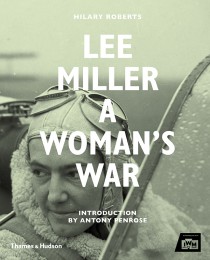
Lee Miller, Challenging Convention
By Lauren Richman
Lauren Richman reviews Hilary Roberts, ed., Lee Miller: A Woman’s War, and the exhibition Lee Miller: A Woman’s War, and Walter Moser and Klaus Albrecht Schröder, eds., Lee Miller, and the exhibition Lee Miller, aka Lee Miller—Photographs and The Indestructible Lee Miller

Lee Miller, Challenging Convention
By Lauren Richman
Lauren Richman reviews Hilary Roberts, ed., Lee Miller: A Woman’s War, and the exhibition Lee Miller: A Woman’s War, and Walter Moser and Klaus Albrecht Schröder, eds., Lee Miller, and the exhibition Lee Miller, aka Lee Miller—Photographs and The Indestructible Lee Miller
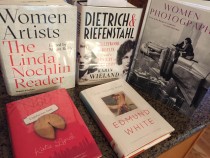
Bookshelf: Elise Dodeles
By Elise Dodeles
In this new installment of Art Journal Open’s Bookshelf, Elise Dodeles shares what she’s reading.

Bookshelf: Elise Dodeles
By Elise Dodeles
In this new installment of Art Journal Open’s Bookshelf, Elise Dodeles shares what she’s reading.
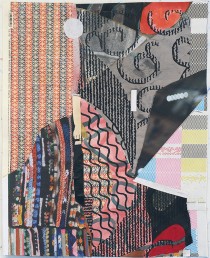
Art Practice beyond the Home Studio: Roberto Visani and Caitlin Masley-Charlet in Conversation
By Caitlin Masley-Charlet
Caitlin Masley-Charlet, deputy director of Guttenberg Arts in Guttenberg, New Jersey, and artist Roberto Visani discuss his experiences while artist-in-residence at Guttenberg Arts and other residencies.

Art Practice beyond the Home Studio: Roberto Visani and Caitlin Masley-Charlet in Conversation
By Caitlin Masley-Charlet
Caitlin Masley-Charlet, deputy director of Guttenberg Arts in Guttenberg, New Jersey, and artist Roberto Visani discuss his experiences while artist-in-residence at Guttenberg Arts and other residencies.

Bookshelf: Lisa Pon
By Lisa Pon
Lisa Pon shares her reading list in this new installment of Art Journal Open’s Bookshelf.

Bookshelf: Lisa Pon
By Lisa Pon
Lisa Pon shares her reading list in this new installment of Art Journal Open’s Bookshelf.

P&P
By Kate Costello
The Los Angeles–based artist Kate Costello has created a unique animation of her limited edition book, P&P. P&P conveys Costello’s examination and subjective cataloging of vernacular languages active within contemporary visual culture.

P&P
By Kate Costello
The Los Angeles–based artist Kate Costello has created a unique animation of her limited edition book, P&P. P&P conveys Costello’s examination and subjective cataloging of vernacular languages active within contemporary visual culture.

Art Journal Open Presents P&P by Kate Costello
By Gloria Sutton
Art Journal Open is pleased to present a new Contemporary Project by artist Kate Costello.

Art Journal Open Presents P&P by Kate Costello
By Gloria Sutton
Art Journal Open is pleased to present a new Contemporary Project by artist Kate Costello.
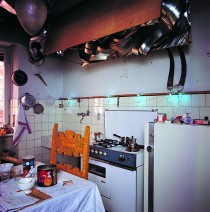
Solitary/Solidary: Mario Merz’s Autonomous Artist
By Elizabeth Mangini
In 1968, while demonstrating students occupied university buildings less than a mile away, the Italian artist Mario Merz hung a handful of neon lights bent into the numerals 1, 1, 2, 3, and 5 above the kitchen stove in his home on Via Santa Giulia in Turin. It wasn’t yet an artwork, just something to think about in the place where he and his wife, fellow artist Marisa Merz, gathered to talk with each other and with friends.

Solitary/Solidary: Mario Merz’s Autonomous Artist
By Elizabeth Mangini
In 1968, while demonstrating students occupied university buildings less than a mile away, the Italian artist Mario Merz hung a handful of neon lights bent into the numerals 1, 1, 2, 3, and 5 above the kitchen stove in his home on Via Santa Giulia in Turin. It wasn’t yet an artwork, just something to think about in the place where he and his wife, fellow artist Marisa Merz, gathered to talk with each other and with friends.

Art-Science: An Annotated Bibliography
By Roger F. Malina
We are witnessing a resurgence of creative and scholarly work that seeks to bridge science and engineering with the arts, design, and the humanities. These practices connect both the arts and sciences, hence the term art-science, and the arts and the engineering sciences and technology, hence the term “art and technology.”

Art-Science: An Annotated Bibliography
By Roger F. Malina
We are witnessing a resurgence of creative and scholarly work that seeks to bridge science and engineering with the arts, design, and the humanities. These practices connect both the arts and sciences, hence the term art-science, and the arts and the engineering sciences and technology, hence the term “art and technology.”
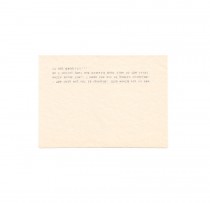
no water, Athens, Greece, 2015: Twenty-four hours with nothing to eat or drink, only smelling the jasmine
By Penelope Vlassopoulou
Penelope Vlassopoulou began her Metamorphosis series in her home city of Athens. The series evolved in multidisciplinary dialogue with diverse urban environments including Berlin, Belgrade, and Chicago. In March 2015, Metamorphosis returned to its point of origin with no water tracing a link between Greece’s historical past and the country’s current predicament.

no water, Athens, Greece, 2015: Twenty-four hours with nothing to eat or drink, only smelling the jasmine
By Penelope Vlassopoulou
Penelope Vlassopoulou began her Metamorphosis series in her home city of Athens. The series evolved in multidisciplinary dialogue with diverse urban environments including Berlin, Belgrade, and Chicago. In March 2015, Metamorphosis returned to its point of origin with no water tracing a link between Greece’s historical past and the country’s current predicament.
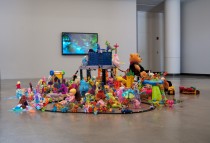
Happyville in the Rearview: A Conversation between Joel Tauber and Pedro de Llano
By Pedro de Llano
Curator and art historian Pedro de Llano speaks with artist Joel Tauber about Tauber’s The Sharing Project (2012–16), an installation and film project that looks at the socialist Jewish community of Happyville (1905–1908) in South Carolina as a way to consider complex questions about social, political, and economic issues in today’s world.

Happyville in the Rearview: A Conversation between Joel Tauber and Pedro de Llano
By Pedro de Llano
Curator and art historian Pedro de Llano speaks with artist Joel Tauber about Tauber’s The Sharing Project (2012–16), an installation and film project that looks at the socialist Jewish community of Happyville (1905–1908) in South Carolina as a way to consider complex questions about social, political, and economic issues in today’s world.
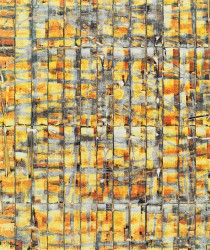
A New Configuration: Marco Breuer in Conversation with Vanessa Kauffman
By Vanessa Kauffman
Artist Marco Breuer and Vanessa Kauffman, communications and outreach manager of Headlands Center for the Arts (Sausalito, California), discuss Breuer’s experiences as an artist-in-residence at Headlands and other residencies, and the way that the flexibility and differences in the studio set-up at each residency creates opportunities for new discoveries.

A New Configuration: Marco Breuer in Conversation with Vanessa Kauffman
By Vanessa Kauffman
Artist Marco Breuer and Vanessa Kauffman, communications and outreach manager of Headlands Center for the Arts (Sausalito, California), discuss Breuer’s experiences as an artist-in-residence at Headlands and other residencies, and the way that the flexibility and differences in the studio set-up at each residency creates opportunities for new discoveries.

Root and Ramble: Kija Lucas and Amy Cancelmo in Conversation
By Amy Cancelmo
Amy Cancelmo, art programs director at Root Division (San Francisco, California), speaks with artist Kija Lucas about her experiences as an artist-in-residence at Root Division and other residencies, and her cross-country travels to work on her projects In Search of Home and Objects to Remember You By: An Index of Sentiment .

Root and Ramble: Kija Lucas and Amy Cancelmo in Conversation
By Amy Cancelmo
Amy Cancelmo, art programs director at Root Division (San Francisco, California), speaks with artist Kija Lucas about her experiences as an artist-in-residence at Root Division and other residencies, and her cross-country travels to work on her projects In Search of Home and Objects to Remember You By: An Index of Sentiment .

Between Negative Dialectics and Biological Aesthesis
By Charissa Terranova
Charissa Terranova reviews Wetware: Art, Agency, Animation, which was on view at the Beall Center for Art + Technology, University of California, Irvine, from February 6–May 7, 2016.

Between Negative Dialectics and Biological Aesthesis
By Charissa Terranova
Charissa Terranova reviews Wetware: Art, Agency, Animation, which was on view at the Beall Center for Art + Technology, University of California, Irvine, from February 6–May 7, 2016.
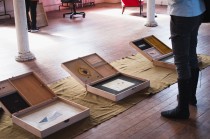
Outside of Time: Patricia Fernández Carcedo in Conversation with Vanessa Kauffman
By Vanessa Kauffman
Vanessa Kauffman, communications and outreach manager for Headlands Center for the Arts (Sausalito, California), speaks with artist Patricia Fernández Carcedo about her experiences as an artist-in-residence at Headlands and other residencies, and the importance that walking holds within her artistic practice.

Outside of Time: Patricia Fernández Carcedo in Conversation with Vanessa Kauffman
By Vanessa Kauffman
Vanessa Kauffman, communications and outreach manager for Headlands Center for the Arts (Sausalito, California), speaks with artist Patricia Fernández Carcedo about her experiences as an artist-in-residence at Headlands and other residencies, and the importance that walking holds within her artistic practice.
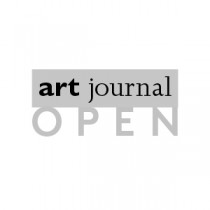
Web Editor’s Note: Conversations
By Gloria Sutton
Art Journal Open is pleased to introduce a new cluster of conversations focused on artist residencies.

Web Editor’s Note: Conversations
By Gloria Sutton
Art Journal Open is pleased to introduce a new cluster of conversations focused on artist residencies.
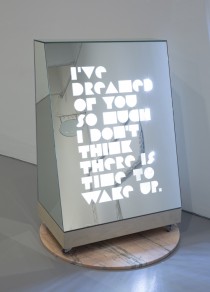
Humans Have Been Human for So Long: Shana Lutker and Mika Yoshitake in Conversation
By Mika Yoshitake
Curator Mika Yoshitake and artist Shana Lutker discuss Surrealist fightfights, making sense of the past through the lens of the contemporary, and the research process for Lutker’s exhibition Shana Lutker: Le “NEW” Monocle, Chapters 1–3 at the Hirshhorn Museum and Sculpture Garden in Washington, DC (October 27, 2015–February 16, 2016), which was curated by Yoshitake.

Humans Have Been Human for So Long: Shana Lutker and Mika Yoshitake in Conversation
By Mika Yoshitake
Curator Mika Yoshitake and artist Shana Lutker discuss Surrealist fightfights, making sense of the past through the lens of the contemporary, and the research process for Lutker’s exhibition Shana Lutker: Le “NEW” Monocle, Chapters 1–3 at the Hirshhorn Museum and Sculpture Garden in Washington, DC (October 27, 2015–February 16, 2016), which was curated by Yoshitake.

Space Travel: Trisha Brown’s Locus
By Amanda Jane Graham
In 1974 the choreographer Trisha Brown moved to 541 Broadway in SoHo, New York City. The cast-iron “nexus” for postmodern dance, commonly referred to as “the dance building,” had what the former Brown company dancer Elizabeth Garren describes as a “communal atmosphere.” Purchased and renovated by the Fluxus founder George Maciunas “with dancers in mind,” 541 was wider than the majority of the standard buildings in the neighborhood, and more important, it contained no interior pillars, making it an ideal choreographic work space.

Space Travel: Trisha Brown’s Locus
By Amanda Jane Graham
In 1974 the choreographer Trisha Brown moved to 541 Broadway in SoHo, New York City. The cast-iron “nexus” for postmodern dance, commonly referred to as “the dance building,” had what the former Brown company dancer Elizabeth Garren describes as a “communal atmosphere.” Purchased and renovated by the Fluxus founder George Maciunas “with dancers in mind,” 541 was wider than the majority of the standard buildings in the neighborhood, and more important, it contained no interior pillars, making it an ideal choreographic work space.

Troubling Troublemakers
By Chris Taylor
Chris Taylor reviews Troublemakers: The Story of Land Art (2015), written and directed by James Crump.

Troubling Troublemakers
By Chris Taylor
Chris Taylor reviews Troublemakers: The Story of Land Art (2015), written and directed by James Crump.
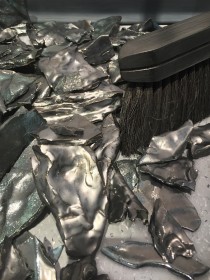
Caitlin Masley-Charlet and Diana Shpungin in Conversation
By Caitlin Masley-Charlet
Caitlin Masley-Charlet, deputy director of Guttenberg Arts (Guttenberg, NJ), speaks with artist Diana Shpungin about her experiences as an artist-in-residence at Guttenberg Arts and other programs, artistic community, and the importance of having space for experimentation. This is the first conversation in a four-part series by Caitlin Masley-Charlet, focusing on artists who were recently in residence at Guttenberg Arts.

Caitlin Masley-Charlet and Diana Shpungin in Conversation
By Caitlin Masley-Charlet
Caitlin Masley-Charlet, deputy director of Guttenberg Arts (Guttenberg, NJ), speaks with artist Diana Shpungin about her experiences as an artist-in-residence at Guttenberg Arts and other programs, artistic community, and the importance of having space for experimentation. This is the first conversation in a four-part series by Caitlin Masley-Charlet, focusing on artists who were recently in residence at Guttenberg Arts.

Knight’s Heritage: Karl Haendel and the Legacy of Appropriation, Episode Three, 2013
By Natilee Harren
In “Episode Three, 2013,” Natilee Harren looks at artist Karl Haendel’s practice of appropriation within the context of today’s image culture. This is the third and final part of her essay, “Karl Haendel and the Legacy of Appropriation.”

Knight’s Heritage: Karl Haendel and the Legacy of Appropriation, Episode Three, 2013
By Natilee Harren
In “Episode Three, 2013,” Natilee Harren looks at artist Karl Haendel’s practice of appropriation within the context of today’s image culture. This is the third and final part of her essay, “Karl Haendel and the Legacy of Appropriation.”
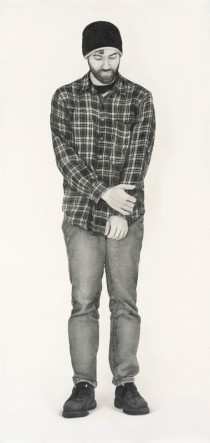
Response to Natilee Harren’s “Knight’s Heritage: Karl Haendel and the Legacy of Appropriation, Episode Three, 2013”
By Nate Harrison
Nate Harrison responds to “Episode Three, 2013,” the third and final part of Natilee Harren’s essay, “Karl Haendel and the Legacy of Appropriation.”

Response to Natilee Harren’s “Knight’s Heritage: Karl Haendel and the Legacy of Appropriation, Episode Three, 2013”
By Nate Harrison
Nate Harrison responds to “Episode Three, 2013,” the third and final part of Natilee Harren’s essay, “Karl Haendel and the Legacy of Appropriation.”
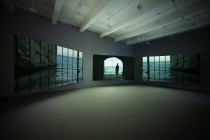
Small Boats, Slave Ship; or, Isaac Julien and the Beauty of Implied Catastrophe
By Emma Chubb
Three horizontal screens stretch across two gallery walls, suspended from the ceiling and hung in a slight arc. At first, the two flanking screens remain dark and only the center screen is illuminated. It shows an expanse of blue water, waves rippling with gold and reflecting the setting sun as they gently curl forward onto a barely visible beach.

Small Boats, Slave Ship; or, Isaac Julien and the Beauty of Implied Catastrophe
By Emma Chubb
Three horizontal screens stretch across two gallery walls, suspended from the ceiling and hung in a slight arc. At first, the two flanking screens remain dark and only the center screen is illuminated. It shows an expanse of blue water, waves rippling with gold and reflecting the setting sun as they gently curl forward onto a barely visible beach.
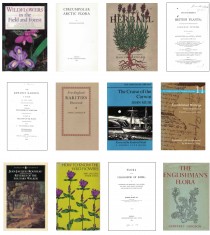
The Arctic Plants of New York City: An Annotated Bibliography
By James Walsh
I’ve been working since 2008 on a long, complex project centered on plants that grow in both the arctic (I always use the lowercase) and New York City, of which there are a surprising number. Along with identifying and pressing these plants, I’ve been reading eighteenth-century herbals and floras and more recent works on edible plants and botany generally, and have had a particular interest in mental travel and in writers who combine botany and literature.

The Arctic Plants of New York City: An Annotated Bibliography
By James Walsh
I’ve been working since 2008 on a long, complex project centered on plants that grow in both the arctic (I always use the lowercase) and New York City, of which there are a surprising number. Along with identifying and pressing these plants, I’ve been reading eighteenth-century herbals and floras and more recent works on edible plants and botany generally, and have had a particular interest in mental travel and in writers who combine botany and literature.

Knight’s Heritage: Karl Haendel and the Legacy of Appropriation, Episode Two, 2012
By Natilee Harren
In “Episode Two” of her three-part essay, “Knight’s Heritage: Karl Haendel and the Legacy of Appropriation,” Natilee Harren explores appropriation, artistic heritage, and medieval suits of armor through the context of an encounter between Karl Haendel and an artist of an earlier generation, Robert Longo.

Knight’s Heritage: Karl Haendel and the Legacy of Appropriation, Episode Two, 2012
By Natilee Harren
In “Episode Two” of her three-part essay, “Knight’s Heritage: Karl Haendel and the Legacy of Appropriation,” Natilee Harren explores appropriation, artistic heritage, and medieval suits of armor through the context of an encounter between Karl Haendel and an artist of an earlier generation, Robert Longo.
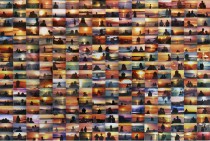
Response to Natilee Harren’s “Knight’s Heritage: Karl Haendel and the Legacy of Appropriation, Episode Two, 2012”
By Nate Harrison
Nate Harrison responds to “Episode Two, 2012,” the second part of Natilee Harren’s essay, “Knight’s Heritage: Karl Haendel and the Legacy of Appropriation.”

Response to Natilee Harren’s “Knight’s Heritage: Karl Haendel and the Legacy of Appropriation, Episode Two, 2012”
By Nate Harrison
Nate Harrison responds to “Episode Two, 2012,” the second part of Natilee Harren’s essay, “Knight’s Heritage: Karl Haendel and the Legacy of Appropriation.”
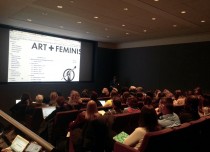
Wikipedia Needs You, But Do You Need Wikipedia?
By Chelsea Spengemann
Chelsea Spengemann on the Art+Feminism Wikipedia Edit-a-thon held at the Museum of Modern Art on March 5, 2016.

Wikipedia Needs You, But Do You Need Wikipedia?
By Chelsea Spengemann
Chelsea Spengemann on the Art+Feminism Wikipedia Edit-a-thon held at the Museum of Modern Art on March 5, 2016.

Bookshelf: Jongwoo Jeremy Kim
For this new installment of Art Journal Open Bookshelf, Jongwoo Jeremy Kim shares his reading list.

Bookshelf: Jongwoo Jeremy Kim
For this new installment of Art Journal Open Bookshelf, Jongwoo Jeremy Kim shares his reading list.
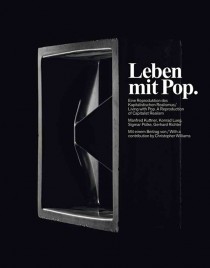
Leaving Düsseldorf
By Godfre Leung
Godfre Leung reviews Sabine Breitwieser, Laura J. Hoptman, Michael Darling, and Jeffrey D. Grove, Isa Genzken: Retrospective, and the exhibition Isa Genzken: Retrospective; Kathy Halbreich, ed., Alibis: Sigmar Polke, 1963–2010, and the exhibition Alibis: Sigmar Polke, 1963–2010; and Elodie Evers, Magdalena Holzhey, and Gregor Jansen, eds., Leben mit Pop and the exhibition Leben mit Pop.

Leaving Düsseldorf
By Godfre Leung
Godfre Leung reviews Sabine Breitwieser, Laura J. Hoptman, Michael Darling, and Jeffrey D. Grove, Isa Genzken: Retrospective, and the exhibition Isa Genzken: Retrospective; Kathy Halbreich, ed., Alibis: Sigmar Polke, 1963–2010, and the exhibition Alibis: Sigmar Polke, 1963–2010; and Elodie Evers, Magdalena Holzhey, and Gregor Jansen, eds., Leben mit Pop and the exhibition Leben mit Pop.
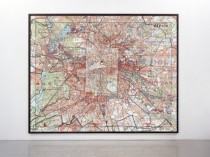
Against Infographics
By Daniel Rosenberg
When design is excellent, graphics reveal data, writes the infographics guru Edward Tufte. Good information graphics allow the reader to see relationships not apparent in data without visual form. In principle, such graphics do not impose interpretations but, by showing relationships, make interpretations possible.

Against Infographics
By Daniel Rosenberg
When design is excellent, graphics reveal data, writes the infographics guru Edward Tufte. Good information graphics allow the reader to see relationships not apparent in data without visual form. In principle, such graphics do not impose interpretations but, by showing relationships, make interpretations possible.
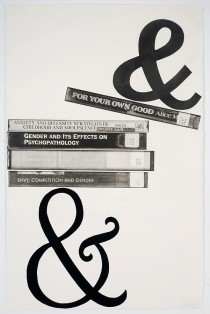
Introducing a Three-Part Project by Natilee Harren, Karl Haendel, and Nate Harrison
By Gloria Sutton
Art Journal Open is pleased to present a three-part, three-author project by Natilee Harren, Karl Haendel, and Nate Harrison.

Introducing a Three-Part Project by Natilee Harren, Karl Haendel, and Nate Harrison
By Gloria Sutton
Art Journal Open is pleased to present a three-part, three-author project by Natilee Harren, Karl Haendel, and Nate Harrison.

Knight’s Heritage: Karl Haendel and the Legacy of Appropriation, Episode One, 2000
By Natilee Harren
In Natilee Harren’s three-part essay series on issues of appropriation and artistic heritage, she examines episodes in the work of the Los Angeles–based artist Karl Haendel. In “Episode One,” Harren looks closely at Haendel’s Knight’s Heritage, 1963 (2001), which he made as a graduate student, and how it relates to the career and work of the sculptor Anne Truitt (1921–2004). Haendel made his work, a reconstruction of a 1963 work by Truitt, based on photographs, without ever having seen the Truitt sculpture itself.

Knight’s Heritage: Karl Haendel and the Legacy of Appropriation, Episode One, 2000
By Natilee Harren
In Natilee Harren’s three-part essay series on issues of appropriation and artistic heritage, she examines episodes in the work of the Los Angeles–based artist Karl Haendel. In “Episode One,” Harren looks closely at Haendel’s Knight’s Heritage, 1963 (2001), which he made as a graduate student, and how it relates to the career and work of the sculptor Anne Truitt (1921–2004). Haendel made his work, a reconstruction of a 1963 work by Truitt, based on photographs, without ever having seen the Truitt sculpture itself.
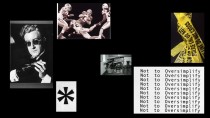
Oral Sadism & The Vegetarian Personality (Approximately)
By Karl Haendel
Artist Karl Haendel has been creating an archive of 35mm slides since 2000, composed of found images and photographs. The approximately 10,000 slides are organized into more than 250 categories and subcategories (from the W section: Wedding Geometry, Weapons, White House, World War I), and some of these slides become the basis for his drawings. Though this archive exists in analogue form, Haendel recognized that the popular GIF format functions in a similar manner to that of the slide projector, and thus created a digital slideshow experience of these source images for Art Journal Open. To view Oral Sadism & The Vegetarian Personality (Approximately), click on the image inside this post to launch the project.

Oral Sadism & The Vegetarian Personality (Approximately)
By Karl Haendel
Artist Karl Haendel has been creating an archive of 35mm slides since 2000, composed of found images and photographs. The approximately 10,000 slides are organized into more than 250 categories and subcategories (from the W section: Wedding Geometry, Weapons, White House, World War I), and some of these slides become the basis for his drawings. Though this archive exists in analogue form, Haendel recognized that the popular GIF format functions in a similar manner to that of the slide projector, and thus created a digital slideshow experience of these source images for Art Journal Open. To view Oral Sadism & The Vegetarian Personality (Approximately), click on the image inside this post to launch the project.

Response to Natilee Harren’s “Knight’s Heritage: Karl Haendel and the Legacy of Appropriation, Episode One, 2000”
By Nate Harrison
Nate Harrison responds to “Knight’s Heritage: Karl Haendel and the Legacy of Appropriation, Episode One” by Natilee Harren.

Response to Natilee Harren’s “Knight’s Heritage: Karl Haendel and the Legacy of Appropriation, Episode One, 2000”
By Nate Harrison
Nate Harrison responds to “Knight’s Heritage: Karl Haendel and the Legacy of Appropriation, Episode One” by Natilee Harren.

Update from the European Postwar and Contemporary Art Forum
European Postwar and Contemporary Art Forum shares a News & Notes update on their recent activities.

Update from the European Postwar and Contemporary Art Forum
European Postwar and Contemporary Art Forum shares a News & Notes update on their recent activities.
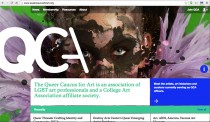
Update from the Queer Caucus for Art
New in News & Notes: An update from the Queer Caucus for Art.
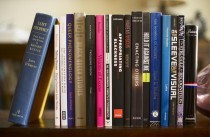
Bookshelf: Derek Conrad Murray
Derek Conrad Murray shares his reading list in this week’s Art Journal Open Bookshelf.

Bookshelf: Derek Conrad Murray
Derek Conrad Murray shares his reading list in this week’s Art Journal Open Bookshelf.

Report on the Society of Contemporary Art Historians
The newest installment of News & Notes is a report on the Society of Contemporary Art Historians.

Report on the Society of Contemporary Art Historians
The newest installment of News & Notes is a report on the Society of Contemporary Art Historians.
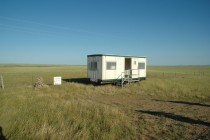
Rewilding: An Emerging History of Common Field
By James McAnally
Common Field was born of a singular moment, a shared time of simmering scarcity matched with an abundance of artist-centric models springing up globally. The emergent network is quickly becoming a central figure within a spectrum of new alternative forms increasingly coming to define a deflated decade.

Rewilding: An Emerging History of Common Field
By James McAnally
Common Field was born of a singular moment, a shared time of simmering scarcity matched with an abundance of artist-centric models springing up globally. The emergent network is quickly becoming a central figure within a spectrum of new alternative forms increasingly coming to define a deflated decade.
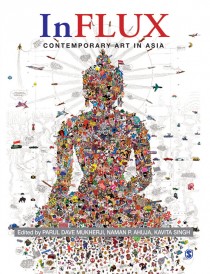
Barbarians at the Gates: Contemporary Art and Globalization in Asia
By Sonal Khullar
Sonal Khullar reviews InFlux: Contemporary Art in Asia edited by Parul Dave-Mukherji, Naman P. Ahuja, and Kavita Singh.

Barbarians at the Gates: Contemporary Art and Globalization in Asia
By Sonal Khullar
Sonal Khullar reviews InFlux: Contemporary Art in Asia edited by Parul Dave-Mukherji, Naman P. Ahuja, and Kavita Singh.

The Body is a Location: Math Bass in Conversation with Mia Locks
By Mia Locks
Curator Mia Locks speaks with artist Math Bass about ambiguity, body movement, and the recent exhibition of Bass’s work that Locks curated, Math Bass: Off the Clock, which was on view at MoMA PS1 from May 3 to September 7, 2015.

The Body is a Location: Math Bass in Conversation with Mia Locks
By Mia Locks
Curator Mia Locks speaks with artist Math Bass about ambiguity, body movement, and the recent exhibition of Bass’s work that Locks curated, Math Bass: Off the Clock, which was on view at MoMA PS1 from May 3 to September 7, 2015.
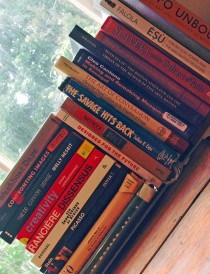
Bookshelf: Suzanne Preston Blier
In the newest installment of Art Journal Open’s Bookshelf project, Suzanne Preston Blier shares what she’s been reading.

Bookshelf: Suzanne Preston Blier
In the newest installment of Art Journal Open’s Bookshelf project, Suzanne Preston Blier shares what she’s been reading.
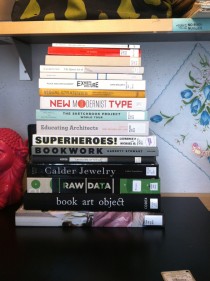
Bookshelf: Lareese Hall
Lareese Hall shares her “work” and “life” bookshelves in this installment of Art Journal Open’s Bookshelf series.

Bookshelf: Lareese Hall
Lareese Hall shares her “work” and “life” bookshelves in this installment of Art Journal Open’s Bookshelf series.

How Have New Technologies Shaped the Introductory Art History Classroom? Why Does It Matter? An Update from Art Historians Interested in Pedagogy and Technology
Art Journal Open’s News & Notes section launches with an update from Art Historians Interested in Pedagogy and Technology.

How Have New Technologies Shaped the Introductory Art History Classroom? Why Does It Matter? An Update from Art Historians Interested in Pedagogy and Technology
Art Journal Open’s News & Notes section launches with an update from Art Historians Interested in Pedagogy and Technology.

Bookshelf: Paul A. Ranogajec
Paul A. Ranogajec shares his reading list in this installment of Art Journal Open’s Bookshelf series.

Bookshelf: Paul A. Ranogajec
Paul A. Ranogajec shares his reading list in this installment of Art Journal Open’s Bookshelf series.

Yoga for Adjuncts: The Somatics of Human Capital
By Christian Nagler
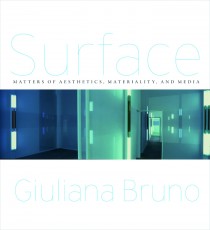
Superficial Thinking: Screen Practices and Screen Architectures
By Swagato Chakravorty
Swagato Chakravorty reviews Surface: Matters of Aesthetics, Materiality, and Media by Giuliana Bruno.

Superficial Thinking: Screen Practices and Screen Architectures
By Swagato Chakravorty
Swagato Chakravorty reviews Surface: Matters of Aesthetics, Materiality, and Media by Giuliana Bruno.

Two for One: robbinschilds in conversation with Dina Deitsch
By Dina Deitsch
In the final installment of her three-part interview series, curator Dina Deitsch speaks with robbinschilds about site, collaboration, and the process of creating Constructions I–IV, which was commissioned for the 2011 exhibition Temporary Structures: Performing Architecture in Contemporary Art at the deCordova Sculpture Park and Museum.

Two for One: robbinschilds in conversation with Dina Deitsch
By Dina Deitsch
In the final installment of her three-part interview series, curator Dina Deitsch speaks with robbinschilds about site, collaboration, and the process of creating Constructions I–IV, which was commissioned for the 2011 exhibition Temporary Structures: Performing Architecture in Contemporary Art at the deCordova Sculpture Park and Museum.

Bookshelf: Judith Rodenbeck
Judith Rodenbeck shares her summer reading in the newest installment of Art Journal Open’s Bookshelf series.

Bookshelf: Judith Rodenbeck
Judith Rodenbeck shares her summer reading in the newest installment of Art Journal Open’s Bookshelf series.
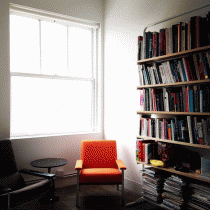
Bookshelf: Matthew Israel
In this week’s Bookshelf, Matthew Israel shares what he’s reading.
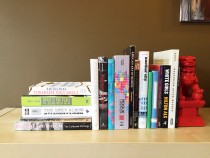
Bookshelf: Steven Nelson
Steven Nelson shares what’s on his bookshelf.
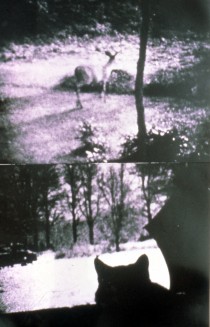
“The Cat Is My Medium”: Notes on the Writing and Art of Carolee Schneemann
By Thyrza Nichols Goodeve
For several years, Carolee Schneemann has presented an ever-evolving performative lecture about her work, starting with drawings she made at the ages of four and seven. I first saw it in 2009 at St. Mark’s Church.

“The Cat Is My Medium”: Notes on the Writing and Art of Carolee Schneemann
By Thyrza Nichols Goodeve
For several years, Carolee Schneemann has presented an ever-evolving performative lecture about her work, starting with drawings she made at the ages of four and seven. I first saw it in 2009 at St. Mark’s Church.

Not Getting There Is Half the Fun: Holidays with Freud
By Elizabeth Legge
Elizabeth Legge reviews Sharon Kivland’s Freud on Holiday series.

Not Getting There Is Half the Fun: Holidays with Freud
By Elizabeth Legge
Elizabeth Legge reviews Sharon Kivland’s Freud on Holiday series.
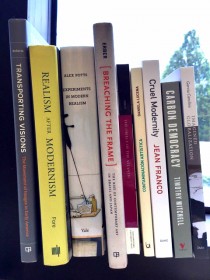
Bookshelf: Megan A. Sullivan
Megan A. Sullivan shares her summer reading list in this week’s Bookshelf.

Bookshelf: Megan A. Sullivan
Megan A. Sullivan shares her summer reading list in this week’s Bookshelf.

Bookshelf: Lenore Chinn
For the newest installment of Art Journal Open’s Bookshelf series, artist Lenore Chinn shares the books on her shelf.

Bookshelf: Lenore Chinn
For the newest installment of Art Journal Open’s Bookshelf series, artist Lenore Chinn shares the books on her shelf.
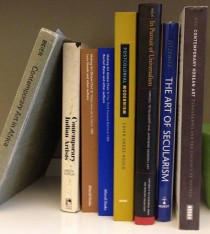
Bookshelf: Rebecca M. Brown
For the first in Art Journal Open’s new Bookshelf series, Rebecca M. Brown shares what’s on her reading list.

Bookshelf: Rebecca M. Brown
For the first in Art Journal Open’s new Bookshelf series, Rebecca M. Brown shares what’s on her reading list.

Immemorial: The Poetics of AIDS; A Conversation with Rudy Lemcke
By Tina Takemoto
Tina Takemoto and artist Rudy Lemcke discuss his artistic practice and the poetics and politics of AIDS.

Immemorial: The Poetics of AIDS; A Conversation with Rudy Lemcke
By Tina Takemoto
Tina Takemoto and artist Rudy Lemcke discuss his artistic practice and the poetics and politics of AIDS.

Broken Dishes: Kate Gilmore in Conversation with Dina Deitsch
By Dina Deitsch
For the second installment of her conversation series, curator Dina Deitsch speaks with artist Kate Gilmore about Gilmore’s process of creating Like This, Before (2013), and the importance of breaking things and laughing about it.

Broken Dishes: Kate Gilmore in Conversation with Dina Deitsch
By Dina Deitsch
For the second installment of her conversation series, curator Dina Deitsch speaks with artist Kate Gilmore about Gilmore’s process of creating Like This, Before (2013), and the importance of breaking things and laughing about it.
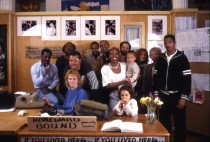
In, Around, and Afterthoughts (On Participation): Photography and Agency in Martha Rosler’s Collaboration with Homeward Bound
By Adair Rounthwaite
It seems obvious to state that photographs play a central role in our ability to study participatory art. Art historians, however, have largely bracketed this as an issue that might be important for how we conceive the politics and aesthetics of participation.

In, Around, and Afterthoughts (On Participation): Photography and Agency in Martha Rosler’s Collaboration with Homeward Bound
By Adair Rounthwaite
It seems obvious to state that photographs play a central role in our ability to study participatory art. Art historians, however, have largely bracketed this as an issue that might be important for how we conceive the politics and aesthetics of participation.

Transnational Fields and the Blindness of the Archive
By Dorota Biczel
Dorota Biczel reviews Making Art Panamerican: Cultural Policy and the Cold War by Claire F. Fox.

Transnational Fields and the Blindness of the Archive
By Dorota Biczel
Dorota Biczel reviews Making Art Panamerican: Cultural Policy and the Cold War by Claire F. Fox.
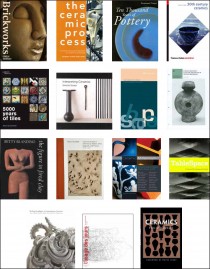
Primal Matter: An Annotated Bibliography for Ceramics
By Brian Molanphy
This introductory selection of texts on ceramics includes books that offer general foundations as well as essays that exemplify specific investigations.

Primal Matter: An Annotated Bibliography for Ceramics
By Brian Molanphy
This introductory selection of texts on ceramics includes books that offer general foundations as well as essays that exemplify specific investigations.

Floating Cabins and Shifting Landscapes: William Lamson in Conversation with Dina Deitsch
By Dina Deitsch
In this interview, curator Dina Deitsch and artist William Lamson discuss the slippery space of video, working with and in nature, and the poetics of floating cabins.

Floating Cabins and Shifting Landscapes: William Lamson in Conversation with Dina Deitsch
By Dina Deitsch
In this interview, curator Dina Deitsch and artist William Lamson discuss the slippery space of video, working with and in nature, and the poetics of floating cabins.

The New Geography: Earth Music and Land Art, Version 2.0; Comparison #3
by Mike Maizels
As the first pair of artists in this series examined the semantics of local places, and the second explored the possibility of picturing the world in totality, both artists in the final pairing investigate the question of geographic epistemology—how do the materials facts of the external world become the objects of systematic human understanding?

The New Geography: Earth Music and Land Art, Version 2.0; Comparison #3
by Mike Maizels
As the first pair of artists in this series examined the semantics of local places, and the second explored the possibility of picturing the world in totality, both artists in the final pairing investigate the question of geographic epistemology—how do the materials facts of the external world become the objects of systematic human understanding?

Objects Made Black
by Sampada Aranke
Sampada Aranke reviews Bound to Appear: Art, Slavery, and the Site of Blackness in Multicultural America by Huey Copeland.

Objects Made Black
by Sampada Aranke
Sampada Aranke reviews Bound to Appear: Art, Slavery, and the Site of Blackness in Multicultural America by Huey Copeland.

Dead Boars, Viruses, and Zombies: Roberto Jacoby’s Art History
By Daniel R. Quiles
The subtlest of deceptions lies in wait in a “1000 Words” feature on Roberto Jacoby in the March 2011 issue of Artforum.

Dead Boars, Viruses, and Zombies: Roberto Jacoby’s Art History
By Daniel R. Quiles
The subtlest of deceptions lies in wait in a “1000 Words” feature on Roberto Jacoby in the March 2011 issue of Artforum.

The New Geography: Earth Music and Land Art, Version 2.0; Comparison #2
By Mike Maizels
Mike Maizels examines Shawn Brixey’s Epicycle (2000) and Robert Smithson’s Pointless Vanishing Point (1967) in the second installment of The New Geography: Earth Music and Land Art, Version 2.0.

The New Geography: Earth Music and Land Art, Version 2.0; Comparison #2
By Mike Maizels
Mike Maizels examines Shawn Brixey’s Epicycle (2000) and Robert Smithson’s Pointless Vanishing Point (1967) in the second installment of The New Geography: Earth Music and Land Art, Version 2.0.

Imprinting Agnes Martin
By Karen L. Schiff
In the early 1990s I saw a conference presentation about Agnes Martin’s grid paintings, and their rigor and sensitivity was imprinted on me: I felt motivated to return to making art. When Martin (1912–2004) passed away, I started making artworks to reflect on her work and life, often through printed texts.

Imprinting Agnes Martin
By Karen L. Schiff
In the early 1990s I saw a conference presentation about Agnes Martin’s grid paintings, and their rigor and sensitivity was imprinted on me: I felt motivated to return to making art. When Martin (1912–2004) passed away, I started making artworks to reflect on her work and life, often through printed texts.

